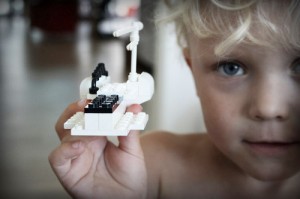By Andy Russell
Picture for a moment the first thing you ever constructed, designed, prototyped, or invented. There’s a pretty good chance that you built your idea using toys like Lego, Play-Doh, Lincoln Logs, or perhaps, to your parents’ dismay, a mix of all of the above (good luck getting Play-Doh out of those bricks).
These are the best kinds of toys -- they not only entertain, but ultimately empower kids to design and share their own imaginative inventions. The virtues of great toys remain the same, even in the digital age. The main objective should be to inspire and scaffold imagination, just as LEGO did for generations of kids. To that end, here’s what to look for in a toy that encourages creative play.
PLAY PATTERNS
While there are hundreds of new toys and games released each year, every one of them is rooted in core play patterns that comes from basic human behaviors. The not-so-great toys (Pet Rocks) are inherently limited to one or two play patterns (collecting and… well, collecting). But the best toys, like LEGOs, appeal to a variety of play patterns (modeling, collecting, storytelling, invention) over a range of ages and developmental stages. These are called “grow-with-me” toys because how kids play with the toys adapts over time with their cognitive development, from DUPLOs to LEGOs to MindStorms.
Take, for example, doll play. Dolls and action figures are some of the most popular toys because they’re (sometimes quite literally) vehicles for so many different play patterns. Some kids collect dolls while others use them for storytelling, battling, or nurture play. Looking closely at kids’ storytelling with dolls and action figures, one might observe that children tell incredible stories through narrative play at a young age, but struggle to share those stories through more formal disciplines like creative writing in class. There’s a gap between what the child imagines and what his or her tools (toys) currently afford.


